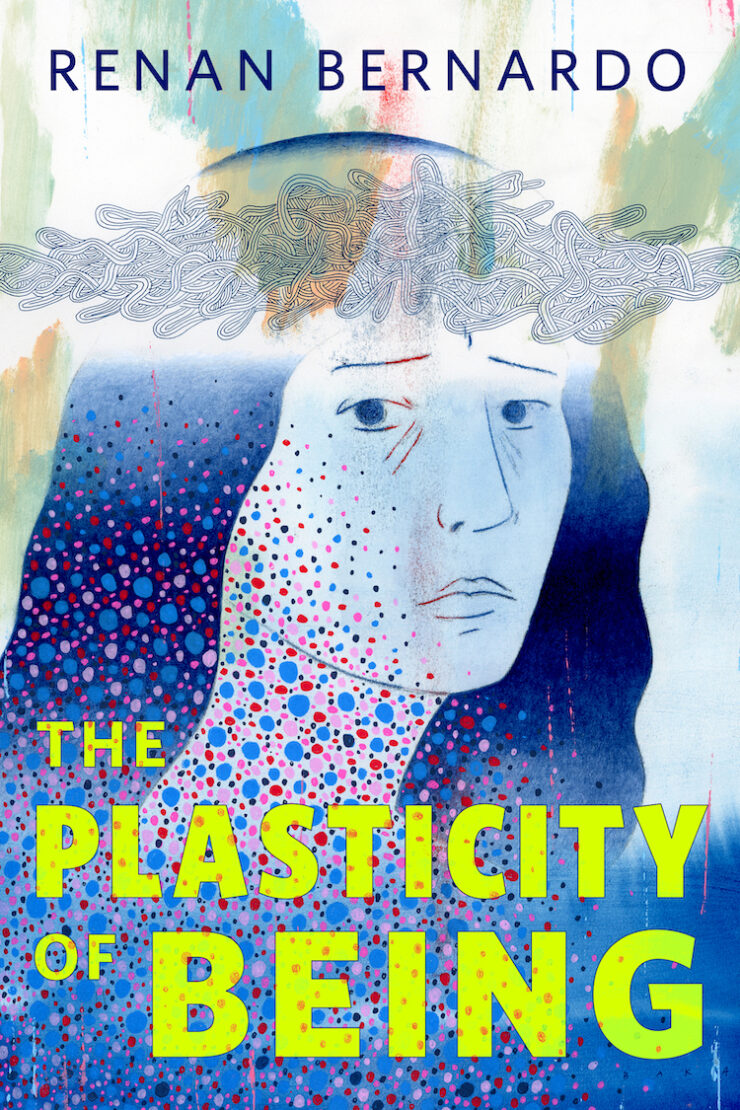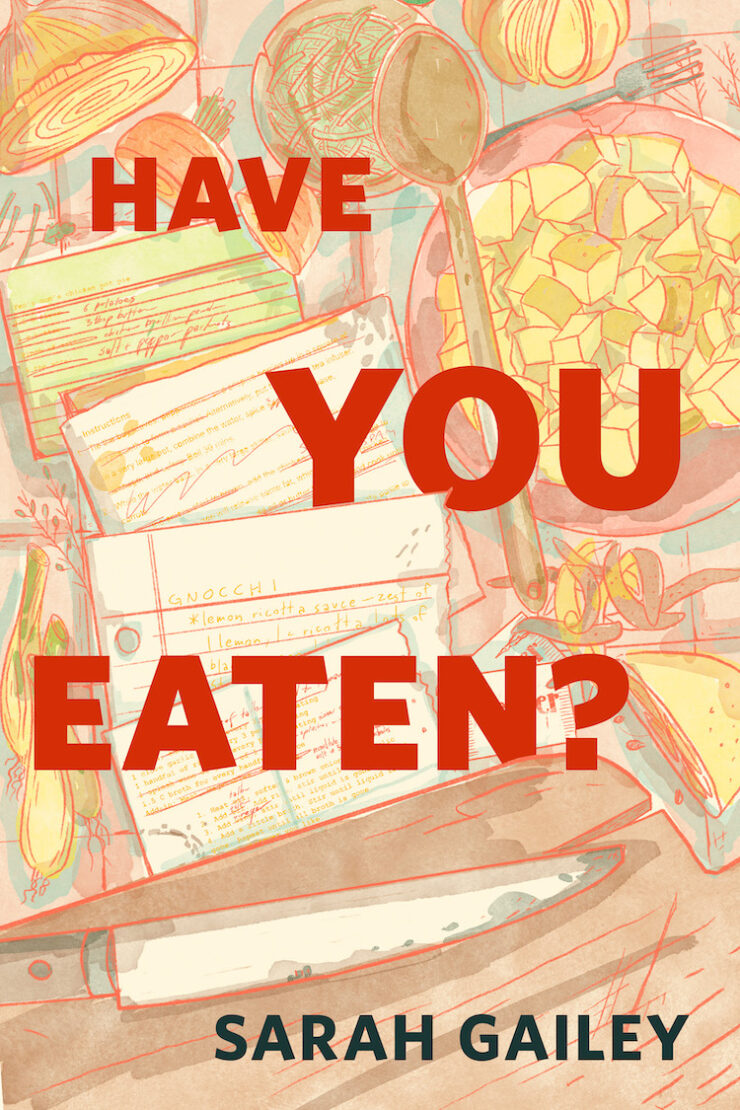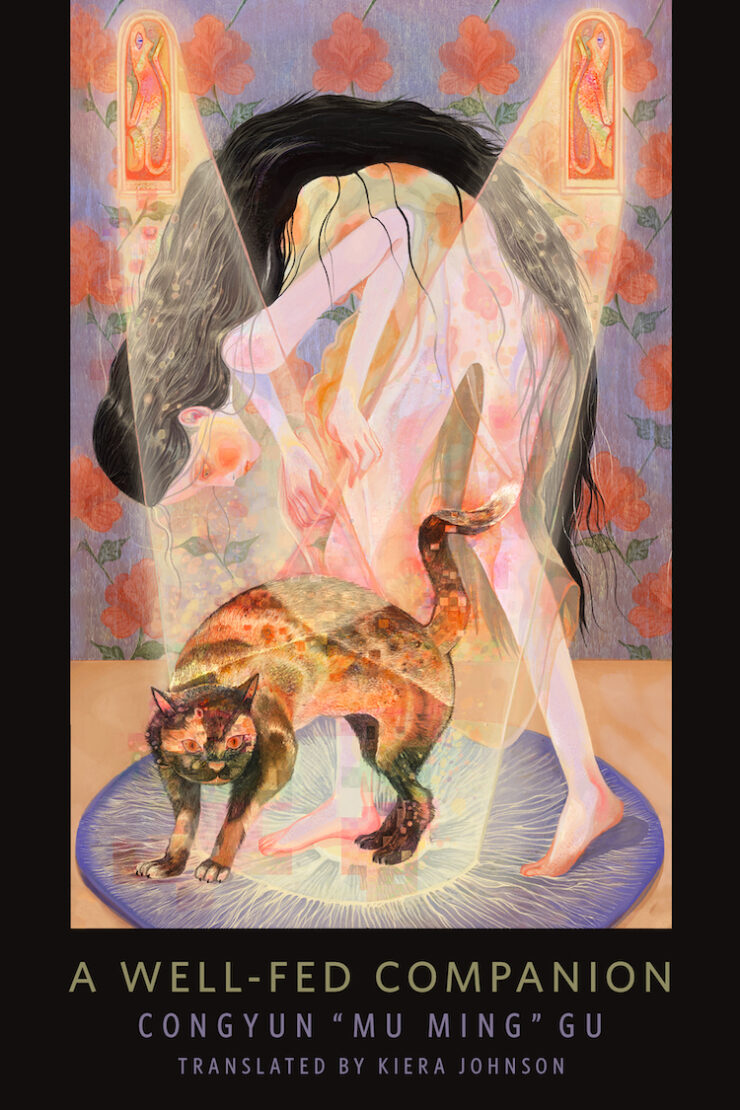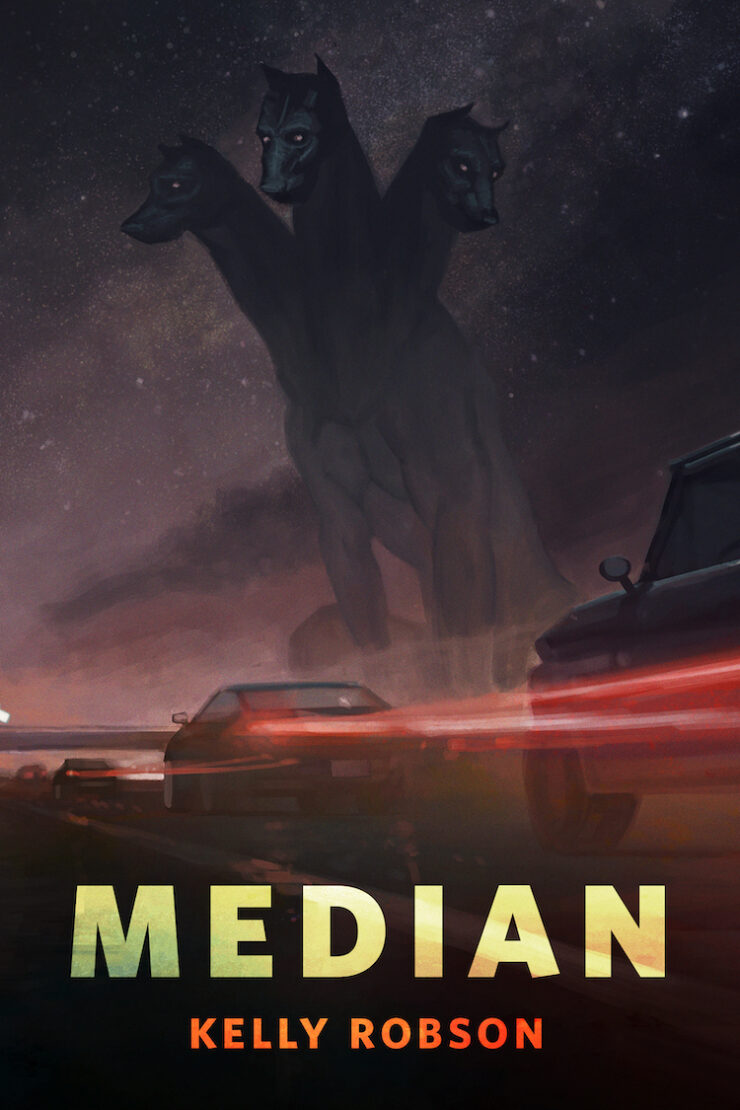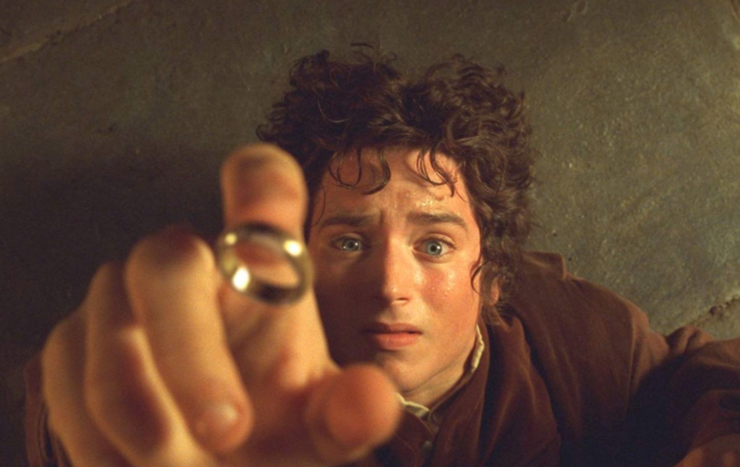“How do you know about Gandalf?” Sam Wilson asks Bucky Barnes in the second episode of the Disney+ series The Falcon and the Winter Soldier, after Bucky mocks Sam for talking about fighting wizards. Bucky snaps back that he read The Hobbit when it was first published in 1937. It’s a fun character moment, one that sparked some debate on social media about whether or not a guy like Bucky Barnes would have read a kid’s book, but what’s interesting to me about the scene is the source of Sam’s confusion. Why would he assume Bucky, a contemporary of J.R.R. Tolkien, wouldn’t know about Gandalf? It’s because Sam thinks of The Lord of the Rings as a 21st-century cultural phenomenon, one that a man out of time like Bucky would need to catch up on.
And the thing is, Sam’s not wrong…
Tolkien’s works and world have cast an outsized shadow over fantasy for decades, spawning countless imitations and making halflings, orcs, dwarves, and elves mainstays of fantasy literature and games like Dungeons and Dragons. Other popular fantasies, like the Harry Potter series and A Song of Ice and Fire, proudly tout their Tolkien influences. The books enjoyed a countercultural cool starting in the 1970s, one amplified by allusions threaded through Led Zeppelin songs and Ralph Bakshi’s trippy 1978 animated movie. But for all its widespread popularity and influence, Middle-earth never quite achieved the mainstream status that other genre stories like Star Wars did—until 2001.
Peter Jackson’s The Lord of the Rings movie trilogy, starting with 2001’s The Fellowship of the Ring, changed the cinematic landscape forever. In my rewatch of Rankin/Bass’s The Hobbit TV movie, I imagined a little girl (let’s call her Elanor, after Samwise’s daughter) in 1977 witnessing mass nerd culture start to take shape with the appearance of The Hobbit movie and Star Wars in the same year. Fast forward to 2001, and the adult Elanor now takes her own young children to see Fellowship of the Ring (and the first Harry Potter movie). She now stands excitedly, but unknowingly, at the dawn of the Golden Age of the Geek.
Jackson’s Lord of the Rings movies ushered in a craze for genre movies and shows that hasn’t abated after two decades. Game of Thrones certainly wouldn’t have become a show, let alone a worldwide hit, without Jackson’s movies. And while the superhero movie boom began with 2000’s X-Men, the massive success of the interlocking, lore-heavy movies of the Marvel Cinematic Universe seems unlikely without Jackson’s movies giving audiences a taste for genre films grounded in layer upon layer of deep backstory (…then again, maybe it’s really all down to the endless charm of Ian McKellen).
Even today, two decades after the films came out, they still pack a powerful pop culture punch. On Better Call Saul, the rich, preppy lawyer Howard Hamlin hisses that talking to Jimmy McGill (the future Saul Goodman) is “Like talking to Gollum.” Netflix’s Stranger Things alludes to Mirkwood. And well before Sam and Bucky bickered over the difference between wizards and sorcerers, Tony Stark jokingly called Hawkeye “Legolas” in The Avengers. All of these shows and movies are made by genre nerds, of course, but what’s telling is that they expect mass audiences, like Steve Rogers with The Wizard of Oz, to understand and appreciate the references. Gandalf, Gollum, and Legolas have become household names.
Buy the Book
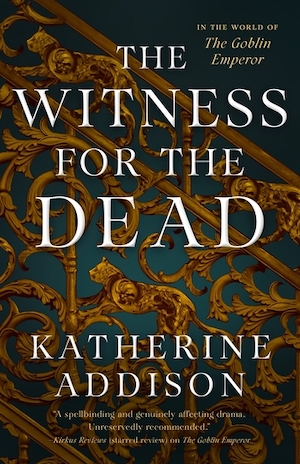

The Witness for the Dead
Like any hit, Jackson’s movies benefited from a certain amount of luck in coming out at the right time in the pop culture cycle. They hit a sweet spot. But they’re also just really damn good. I began reading The Hobbit to my 6-year-old son Liam recently, and we decided to rewatch all the movies in tandem. Two decades after they came out, I’m struck by how incredible the movies still look, even their CGI, and how well they translate Tolkien’s epic onto the big screen. The Fellowship of the Ring, in particular, is a masterful adaptation of the source material, streamlining Tolkien’s story into a fleet, exciting adventure, while losing little of the depth and charm of the books.
Jackson and the team at the Weta Workshop brilliantly translate so much of the rich history and culture of Middle-earth into the sets, costumes, and creature designs. Instead of long expositions about the fraught history of the Elves and Dwarves, we have the image of Legolas with his earth tones and fluid, graceful bows and knives next to Gimli’s sharp, blocky armor and axes. It’s all in the details. Take one example: in the Council of Elrond/Rivendell scene, Gimli tries to destroy the One Ring with his axe. Instead, his axe shatters and sends him sprawling to the ground. The camera then pans up to the Ring, disturbingly untouched, surrounded by shards of the axe. On one of the shards you can see Dwarvish runes. It’s only on screen for a split second, and you wouldn’t fault any filmmaker for simply tossing a few random chunks of metal on the table and calling it a day. But not Jackson and his crew. Even the smallest props are given attention and care. Add the gorgeous natural scenery of Jackson’s native New Zealand, Howard Shore’s stirring score (I still listen to it frequently), and you have a Middle-earth that truly feels like you can step inside it. It feels real.
Twenty years into the Golden Age of the Geek, it’s hard to imagine what a daunting task Jackson faced introducing his vision of Middle-earth to the world. The Lord of the Rings isn’t just a dense fantasy book with vast appendices of backstory, after all—it’s also a sequel. Jackson needed to give viewers a crash course in Middle-earth history and the events of The Hobbit before even getting to that long-expected party that opens the story. We get this with an extended prologue explaining the history of the Rings of Power, including sweeping aerial shots of a huge CGI battle. That sort of shot wasn’t new, and would become common in the decades after the movie (see the final battle in Avengers: Endgame), but it still thrills. Right from the start, Jackson’s showing us the size and sweep of the story before us. It’s the fantasy equivalent of the titanic underside of the Star Destroyer that opens Star Wars.
The final battle in the War of the Last Alliance conveys so much with a few smart shots. Hideous orcs snarl, elves swing their swords in a golden wave, arrows whistle past Elrond’s ear, ruffling his hair but not his concentration. All the while we have Cate Blanchett’s ethereal Galadriel guiding us through a few millennia of history as we track the Ring from Mordor to the bottom of the Anduin, then to Gollum’s cave, and finally into the pocket of “Bilbo Baggins, a hobbit of the Shire.”
The extended edition of the movie then switches to Ian Holm’s Bilbo giving us a second prologue about hobbits. Holm is only in the movie for a few scenes, but he’s so assured as the older Bilbo that every time I watch it, I feel as if I have already seen an actual Hobbit movie starring him. Holm’s “Concerning Hobbits” prologue is delightful, but it’s easy to see why it was cut. There are only so many fantasy prologues you could subject your audience to in 2001 and expect them to stay put. These days our bottoms are far more patient.
One lingering complaint I’ve seen about the film is that it dawdles too long in the Shire, but god, who wouldn’t want to dawdle there? Jackson’s Shire and Bag-End are sumptuously realized, and he understands—better even than Rankin/Bass or Bakshi—how important the Shire is to the story. It’s a place the audience must miss, and feel the need to save and return to, as much as Frodo does, even though its inhabitants are often ridiculous. In other words, it’s home. But the Shire exists in Tolkien’s stories to be left behind, not stayed in, so eventually we must bid our wistful farewell.
After Bilbo’s extravagant and awkward 111th birthday party, and Gandalf’s increasing misgivings about the old fellow’s magic ring, Frodo is forced to flee with his gardener Samwise. Who better to play the two central hobbits than Elijah Wood and Sean Astin, two former child actors taking on their first major adult roles? Wood brings soulful intensity to Frodo with his enormous eyeballs, and Astin’s well-honed everyman routine fits perfectly with Sam’s cheerful but dogged determination. Dominic Monaghan and Billy Boyd’s more comic takes on Merry and Pippin were controversial, but I think they add a welcome touch of humor and mischief to the otherwise fast and frightening journey out of the Shire.
Hot on the hobbits’ trail are the Black Riders, and Jackson’s Ringwraiths are truly terrifying with their empty, tattered black robes and blood-curdling shrieks. Jackson was famously a low-budget horror director before he became Lord of Middle-earth, and it shows. There’s that terrific shot where Frodo looks down the road and it seems to close in on him as he senses the Black Rider approaching. It’s a beautiful visualization of unseen, creeping dread and fear, and also fits Tolkien’s own vision of evil as a force that warps and curls the world around it.
Like Bakshi, Jackson smartly skips straight to Bree, a rainy, mud-clogged town where the hobbits make their first steps into the outside world. It’s a weird, unsettling place and Jackson emphasizes the hobbits’ smallness compared to the men, including Strider, around them. And that establishing shot of Strider! The pipe glow illuminating his eyes in the dark as the score swells ominously! Viggo Mortensen’s handsome Aragorn never quite “looks foul and feels fair” like book Strider, but he brings an earthy charisma and nobility to the role that makes him seem equally at home in the wild and the courts of Minas Tirith. Here’s a man who you would follow into the forest, and make a king of Men. Here’s a man you’d give up immortality for.
Meanwhile, Gandalf runs around Middle-earth trying to suss out the truth about the Ring. We get a brief, sunset shot of the towers of Minas Tirith and Gandalf spelunking in its dusty archives, and later he arrives at Isengard, the domain of the white wizard Saruman. The film’s Isengard comes straight from the canvas of renowned illustrator Alan Lee and it’s a wonder to behold (Lee and fellow Tolkien artist John Howe served as creative consultants on the films). I first encountered Lee’s painting of the tower of Orthanc on the cover of The Two Towers at my college bookstore, and I was so intrigued by it, I bought the entire trilogy. Seeing the painting come to life on the big screen gave me chills.
Equally mesmerizing is watching McKellen and Christopher Lee together in the tense final moments before their old and powerful friendship goes sour. McKellen radiates ancient wisdom and concern while Christopher Lee is perfect as the cold, imperious Saruman. The fanatical light in his eyes when he bids Gandalf to join him on the dark side is as terrifying to behold as the Black Riders. No one will ever play this role better. The knock-down, drag-out fight between the two wizards is the weakest point of the film, but it’s capped by the wonderful shot of Gandalf flying into the air as Lee growls, “You have elected the way of pain.” Every line reading from Lee is a beautiful obsidian shard.
After Frodo and the hobbits escape Bree with Strider, they wind up surrounded by the Ringwraiths on Weathertop. The set feels too much like the sound stage it is, but the ghostly images of the wraiths’ true forms when Frodo puts on the Ring are suitably horrifying. They gave my son nightmares. They gave me nightmares. It also provides Wood with the first of many scenes where he’s stabbed and then gets an overlong close-up of his anguished, just-been-stabbed-face. No one has ever been stabbed more often, and more artfully, than Elijah Wood. Fortunately, Arwen arrives and rides hard with Frodo to her home in Rivendell. Liv Tyler had a difficult job in portraying a character who is both a hardened warrior-elf and the world’s most luminous person, but she pulls it off.
It’s interesting to contrast the three different elves who show up to save Frodo, Strider, and the others from the Ringwraiths, and what the choice of elf tells us about this version of The Lord of the Rings. In Tolkien’s book, it’s Glorfindel, a High Elf who otherwise plays no role in the story, but whose presence expands the world and ties it to Tolkien’s First Age stories in The Silmarillion. Bakshi opts for Legolas, a canny narrative choice given his presence in the Fellowship. Jackson picks Arwen, which allows him to give greater focus to her love story with Aragorn, and also feels like an appropriate echo of Tolkien’s lore. Arwen is something of a Lúthien reborn, and just as Lúthien stared down Sauron at the Isle of Werewolves and cast Morgoth from his dark throne in The Silmarillion, here Arwen outraces the Nazgûl and drowns them with a horse-fringed flood.
Arwen at the ford encompasses most of Jackson’s adaptation choices, for good and for ill. He and fellow screenwriters Fran Walsh and Philippa Boyens often approach adaptation as a shuffling around, switching out characters and even dialogue in scenes (Wormtongue’s words to Éowyn in the second movie originally belonged to Gandalf; similarly, Galadriel’s opening narration before the title screen is Treebeard’s in the book). They streamline and add character conflict where Tolkien favors contemplation and mood. This approach works wonders for Fellowship, by far Tolkien’s shaggiest hobbit book, but it has diminishing returns over the course of the subsequent Middle-earth movies.
Still, all that is ahead, as is the rest of Frodo’s journey, and the impact it would have on worldwide pop culture. Few people watching the movie in 2001, like our imaginary Elanor, would have predicted it. But that’s where adventures lead us, after all, into the unknown. As Holm’s Bilbo says, “It’s a dangerous business, Frodo, going out your door. You step onto the Road, and if you don’t keep your feet, there’s no knowing where you might be swept off to.”
Next time, we’ll cover the back half of Fellowship of the Ring, and the birth of Middle-earth memes.
Austin Gilkeson has written for Tin House, McSweeney’s, Vulture, Foreign Policy, The Toast, and other publications. He lives just outside Chicago with his wife and son.


